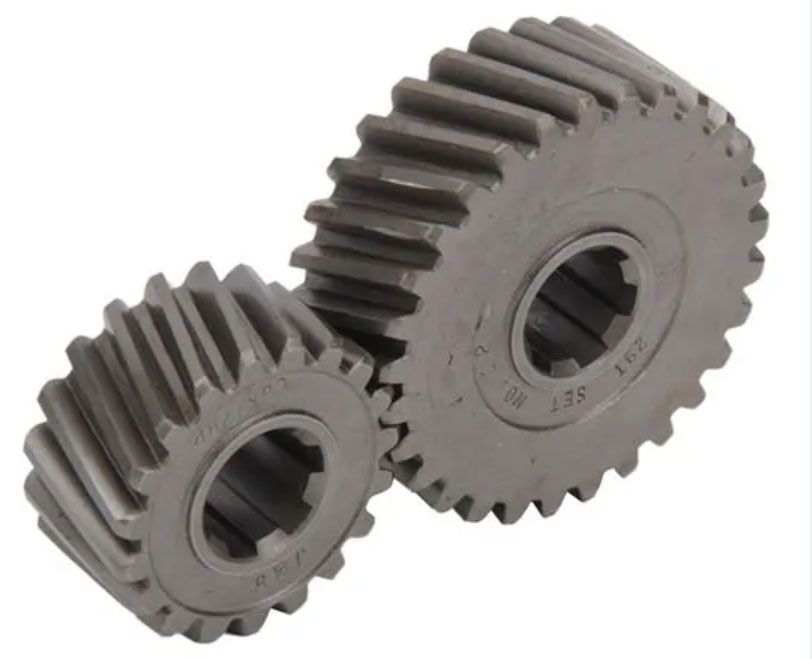
Helical gears play a critical role in aerospace engineering, where reliability, precision, and high-performance are paramount. They are widely used in various aerospace applications, including aircraft engines, landing gear systems, flight control mechanisms, and more. Let’s explore the unmatched performance and significance of helical gears in aerospace engineering:
1. Aircraft Engines:
Helical gears are extensively utilized in aircraft engines, where they transmit power from the turbine to drive various auxiliary systems such as fuel pumps, oil pumps, generators, and hydraulic systems. The precise motion control, smooth operation, and high load-carrying capacity of helical gears ensure reliable power transmission in demanding aerospace environments.
2. Landing Gear Systems:
Landing gear systems in aircraft rely on helical gears for their retracting and extension mechanisms. The helical gears facilitate precise and controlled movement of landing gears, ensuring safe and efficient landing operations. The smooth engagement and enhanced load distribution of helical gears contribute to reliable and durable landing gear performance.
3. Flight Control Mechanisms:
Helical gears are integral to flight control systems, including ailerons, elevators, rudders, and flaps. These systems require precise motion control, smooth operation, and high torque transmission. Helical gears enable accurate and reliable control of aircraft movements, ensuring stable flight and maneuverability.
4. Auxiliary Power Systems:
In aerospace applications, helical gears are used in auxiliary power systems, such as generators, hydraulic pumps, and air conditioning units. These systems require efficient power transmission, precise speed control, and reliable operation. Helical gears offer high torque transmission and smooth operation, ensuring optimal performance and energy efficiency.
5. Gearboxes and Transmissions:
Gearboxes and transmissions in aerospace engineering rely on helical gears for speed reduction, torque multiplication, and power distribution. Helical gears are utilized in various configurations to achieve the required gear ratios and torque output. Their smooth operation, high efficiency, and load-carrying capacity make them essential components in aerospace transmissions.
6. Unmatched Reliability and Durability:
Helical gears offer unmatched reliability and durability in aerospace applications. The inclined tooth engagement and load distribution capabilities allow them to withstand high loads, shock loads, and harsh operating conditions. The high-quality materials, precision manufacturing, and stringent quality control standards in aerospace engineering ensure the longevity and performance of helical gears.
7. Weight and Space Optimization:
Weight and space optimization are crucial in aerospace design. Helical gears enable compact and efficient gearbox designs, allowing for weight reduction and effective utilization of limited space within aircraft and spacecraft. Their high torque transmission capabilities and compactness make them ideal for weight-sensitive aerospace applications.
The unmatched performance of helical gears in aerospace engineering is a result of their precise motion control, smooth operation, high load-carrying capacity, reliability, and durability. Aerospace engineers rely on the superior characteristics of helical gears to meet stringent performance requirements, ensure safe operations, and enhance the overall efficiency and performance of aircraft and spacecraft. The ongoing advancements in gear materials, manufacturing techniques, and design methodologies continue to push the boundaries of helical gear performance, making them an indispensable component in the aerospace industry.
